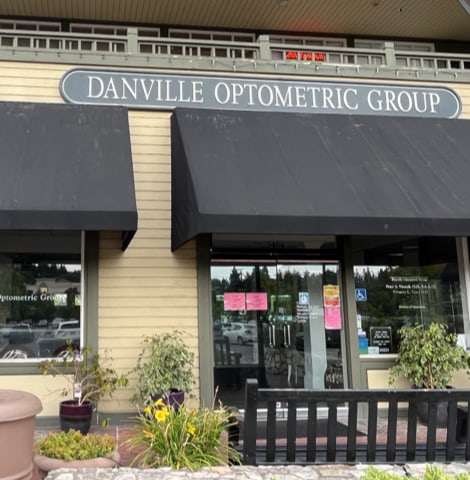No one enjoys feeling like sand is stuck under their eyelids or shielding their eyes from bright lights. But these seemingly minor annoyances could be symptoms of more significant, interconnected conditions—dry eye syndrome and light sensitivity. Dry eyes can cause several uncomfortable symptoms, including causing light sensitivity.
Dry eye syndrome is a chronic condition for many people, but fortunately, its prevalence leads to several safe and effective treatment options for relief. The first step is a visit to your eye doctor for an eye exam if at-home remedies aren’t working. They can determine whether there are underlying factors at work and offer tailored advice for symptom relief, depending on what’s causing your dry eyes.
What Is Dry Eye Syndrome?
Dry eye syndrome, commonly known as dry eye, is a prevalent condition affecting millions worldwide. It occurs when your eyes don’t produce enough tears or when the tears produced don’t provide adequate lubrication.
It sounds simple, but the impact on your quality of life can be substantial—discomfort, blurry vision, and sensitivity to light are just a few of the challenges dry eyes can bring.
Causes of Dry Eye
The causes of dry eye are often multifaceted. They can include:
- Decreased tear production: Changed tear production is often linked to aging, certain medical conditions like Sjögren’s syndrome or rheumatoid arthritis, or side effects from medication.
- Poor tear quality: If any tear layer—oil, water, mucus—is out of balance, your tears may evaporate too quickly and leave your eyes exposed.
- Environmental factors: Prolonged screen time, exposure to air conditioning, or windy environments can exacerbate dry eye symptoms.
What Is Light Sensitivity?
Light sensitivity, or photophobia, is an eye condition where bright lights—regardless of the source—cause discomfort or pain. It’s not a disease but rather a symptom of underlying issues, with dry eye being a potential culprit.
The Connection Between Dry Eye & Light Sensitivity
How are dry eye syndrome and light sensitivity linked? The relationship is rooted in the eye’s tear film—the delicate layer of moisture that coats your eyes.
Your tear film isn’t just for tears—it nourishes, protects, and lubricates your eyes. When the tear film is compromised, as it often is with dry eye syndrome, the eye’s surface can become exposed and inflamed. This exposure and inflammation can lead to increased sensitivity to light.
Your cornea—the eye’s transparent outer layer—becomes less protected with insufficient or poor-quality tears. This may make the cornea more reactive to light, which can cause photophobia symptoms.
Diagnosing & Treating Dry Eye
Prompt diagnosis and treatment are key to dry eye and light sensitivity relief. If you’re experiencing symptoms, the following is what you can typically expect for diagnosis and treatment.
- Eye exams: An optometrist can assess your symptoms, medical history, and tear film quality.
- Tear breakup time test: Faster evaporation may indicate dry eye. Your optometrist can use this test to evaluate tear film quality.
- Light sensitivity scale: Some eye doctors may use this scale to gauge the severity of your light sensitivity if that’s one of your primary symptoms.
Treatment Options
At-home remedies and professional dry eye treatments can help:
- Artificial tears: Over-the-counter lubricating eye drops mimic your natural tears.
- Warm compresses: The warmth from a warm compress can relieve symptoms by loosening clogged oil glands in the eyelids.
- Prescription eye drops: Medicated eye drops can target inflammation or stimulate tear production.
- Punctal plugs: An eye doctor can place tiny inserts into the tear ducts to prevent tears from draining too quickly.
- Intense pulsed light (IPL) therapy: Many eye doctors offer different forms of IPL therapy to treat chronic dry eye syndrome.
- Lifestyle adjustments: Reducing screen time and wearing sunglasses outdoors can provide relief.
Lifestyle Changes & Practical Coping Strategies
Daily eye-friendly habits are an excellent way of managing dry eye and photophobia. Consider the following strategies to keep your eyes more comfortable:
- Environmental adjustments: Use a humidifier to maintain optimal air moisture, adjust screens to minimize glare, and use blue-light filters—these are a few environmental adjustments you can make to improve your symptoms.
- Hydration and nutrition: Stay hydrated to support tear production, and include omega-3 fatty acids in your diet as they benefit overall eye health. Fish oil supplementation could be a beneficial option to consider.
- Remember the 20-20-20 rule: For every 20 minutes spent on a screen, look at something 20 feet away for at least 20 seconds. Following this rule can reduce eye strain and dryness related to computer use or intense focus on something.
- Build a routine: Create a consistent eye care routine using artificial tears and keeping your eyelids clean. Don’t forget to include regular visits to your optometrist in your routine, too.
Why Addressing These Conditions Matters
Ignoring dry eye syndrome and light sensitivity can affect more than just your eyes—it can impact your work performance, social interactions, and enjoyment of simple pleasures like reading or spending time outdoors. By understanding and treating these conditions, you invest in your overall quality of life and daily comfort.
Take Control of Your Eye Health
Living with conditions like dry eye or light sensitivity doesn’t have to be a daily struggle. You can improve your eye comfort by taking proactive steps—whether by adjusting your environment or seeking medical advice.
Call our team at Danville Optometric Group and book an appointment at one of our convenient locations. One of our experienced eye doctors can examine your eyes, discuss your symptoms, and offer a tailored treatment approach to keep your eyes comfortable and your vision clear.













